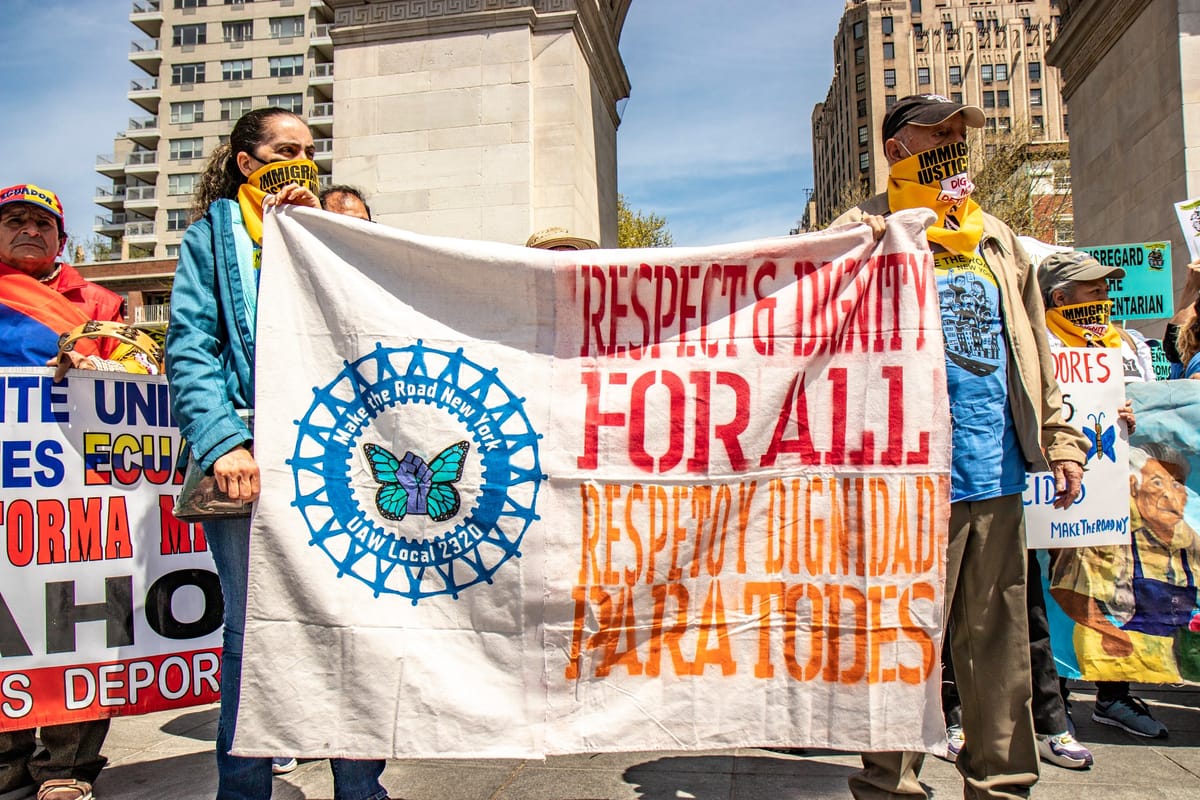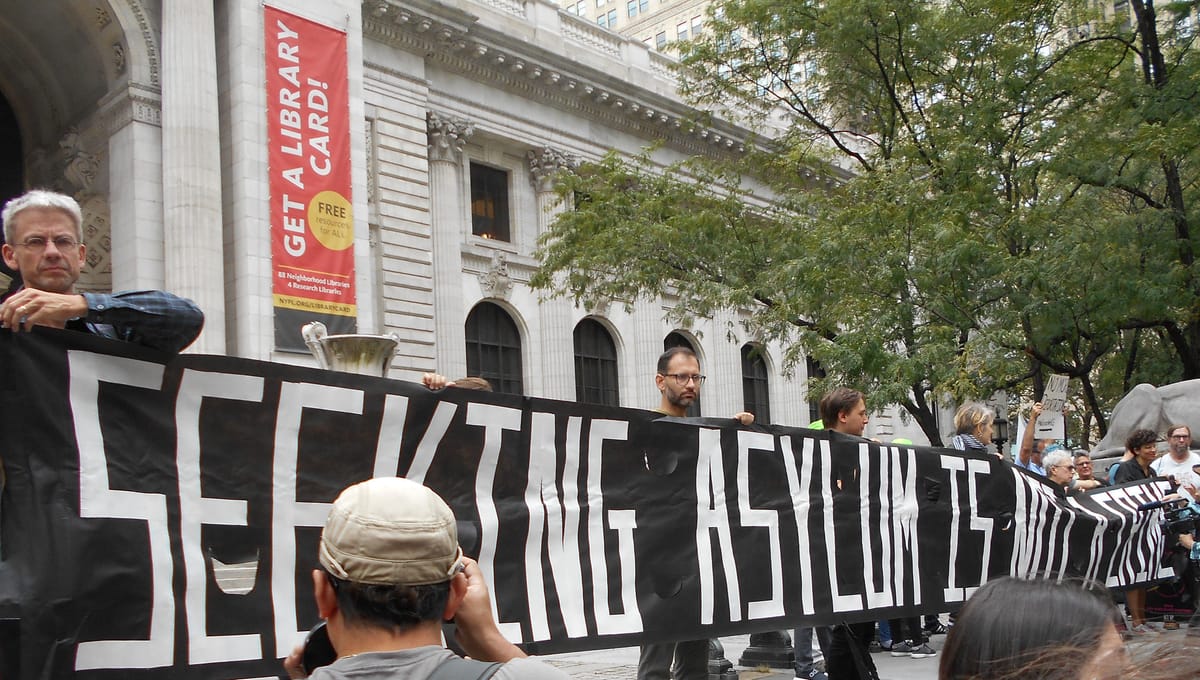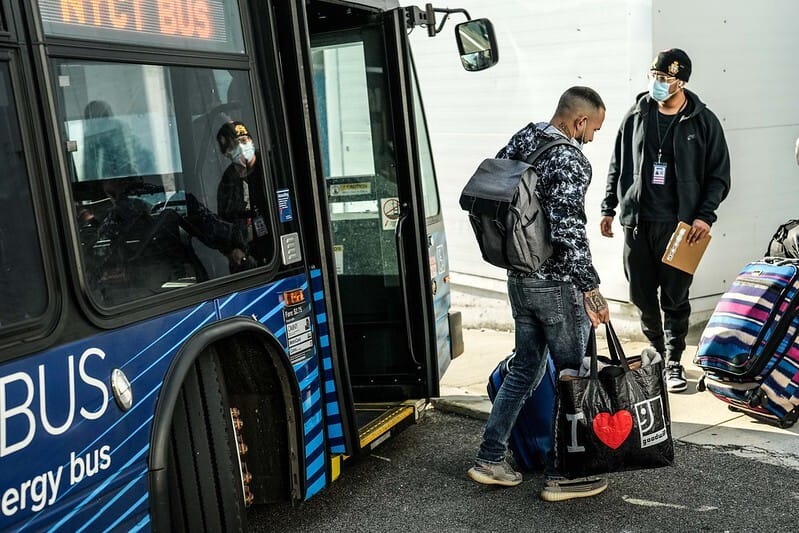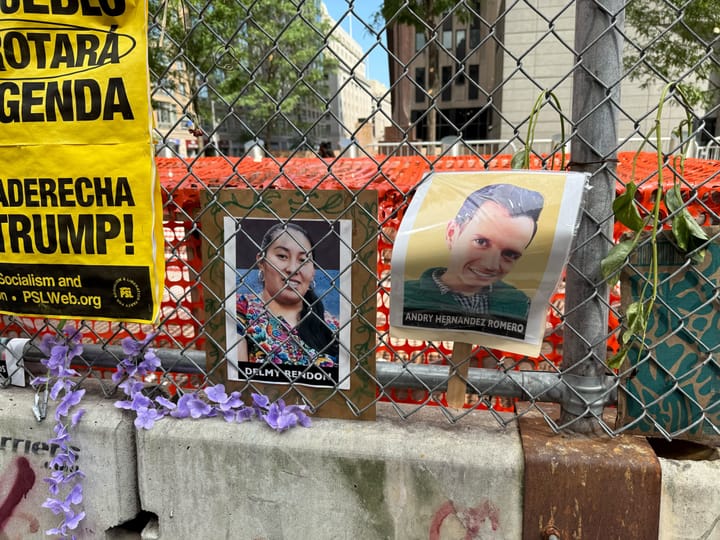Why do people call asylum-seekers 'migrants' and not 'immigrants'?
Our columnists tackle a reader question on the terminology of the migrant crisis

In the early days of the Trump administration, local and state politicians touted New York’s immigrant heritage and contrasted it with the president’s rampant nativism. Today, some of those same politicians are up in arms about the influx of migrants in New York City. This week, we’re answering a reader's question about the semantic differences between “migrants” and “immigrants,” and what the different terms suggest about each respective population.
"Why does everyone refer to the newly arrived immigrants as 'migrants'? Who decided to change the terminology? Why not call them immigrants?"
Both in technical and colloquial parlance, “migrant” is usually used to refer to someone who is currently migrating, i.e. they’re either in the process of migration or migrate periodically. The term has been applied to recent asylum seeker arrivals as a way of identifying them as people whose migration was very recent, or perhaps still ongoing (an under-covered story is the extent to which migrant arrivals to New York City have ended up decamping to other cities and states).
While the term has no specific legal meaning, there is also a legal overtone to it, which centers on the fact that these asylum seekers currently exist in something of a liminal immigration state. Contrary to popular belief, the vast majority are not illegally present or evading detection — by definition, the government has already processed and released them, and they’re present under a certain color of law even if they don’t have specific status. Nonetheless, their status as asylum seekers in pending removal proceedings makes their future situation very uncertain.
While they’re able to get protections from deportation and work authorizations for the intervening months or years, at some point, some percentage will win their cases and become permanent residents and citizens and fully integrate into the fabric of civic life, while some will lose the cases and be ordered removed. Of those who lose, some percentage will actually be detained and deported and some will end up as part of the city’s standing population of longtime undocumented residents. This state of unknown and diverging paths makes the migrant label seem apt, as in a broad sense they remain in a state of migration.

The descriptor also serves to differentiate them from the larger population colloquially termed “immigrants,” which is really an umbrella term that covers everything from naturalized citizens to the undocumented. What the usage tends to have in common is that it’s applied to populations that have settled in the U.S. and typically in a certain place within the country, with less uncertainty about their status. This doesn’t necessarily mean they have status — the term includes the city’s undocumented population — but usually that it’s not as up in the air.
As of a few years ago, over three quarters of the undocumented population in New York state had been present in the United States for at least five years, and almost 40 percent had been in the country for 15 years or more. So while on paper they actually have less “status” than asylum seekers, this population is firmly settled here. These are of course not exact terminologies and different people use them in different ways, but it’s useful to draw these distinctions as a matter of public understanding and public policy, and the shorthand helps with that.
It’s worth noting, though, that this can cut both ways, and narratives like the migrant crime panic being pushed by some right-wing outlets and commentators can capitalize on the functional separation of migrants as a group to advance an agenda. It’s also the case that there are some simmering tensions between these populations, with some longtime immigrants feeling that they’ve in some ways been edged out or deprioritized by the recent arrivals, a belief that’s in part fed by these narratives.
Another persistent narrative is that of the “migrant crisis” or the “border crisis,” both of which have been repeatedly deployed over the past ten years. In September 2016, two months before winning the presidential election, Donald Trump decried the “crisis of illegal crossings and illegal overstays” and promised that he’d accomplish “all of our enforcement and deportation goals and truly end illegal immigration for good.” There were just over 408,000 crossings between ports of entry that year, plus 274,821 people who presented themselves at official crossing points but were deemed inadmissible. (This is a common way people ask for asylum: since you have to be on U.S. soil to ask for protection and most migrants can’t obtain visas to enter the U.S., they’ll instead cross the border at or between ports of entry.)

Three years later, well into Trump’s border crackdown, Border Patrol and Customs and Border Protection reported a combined total of 977,509 encounters at and between ports of entry. Of those, 87 percent were between ports of entry. The increase in crossings between official entry points was the result of several Trump-era policies intended to restrict asylum at the border — like “metering,” or the limiting of how many people could ask for asylum at a port of entry on a given day. But the overall rise in migrants at the border, both at and between points of entry, was not the result of a change in policy: from the moment he was sworn in, Trump made it clear that his administration would take a hard line against migrants, including those who were seeking asylum in the United States. Migrants weren’t drawn to the border by Trump’s rhetoric or his actions; for many, seeking asylum in the U.S. was a last resort after all other options had been exhausted.
The question we should be asking ourselves, then, isn’t which of Biden’s policies has contributed to the current crisis, or what policies can be implemented to stop people from coming. We are indeed in the midst of a migrant crisis, but in some ways, it has been a crisis of politicians’ own making. The number of people asking for asylum at the southern border is increasing year after year. Instead of trying and failing to crack down on crossings, the federal government can and should find a way to process people humanely and with dignity.
Got questions about the migrant crisis or immigration issues in New York in general? Send ‘em our way here, and we may answer them in a future column.





Comments ()